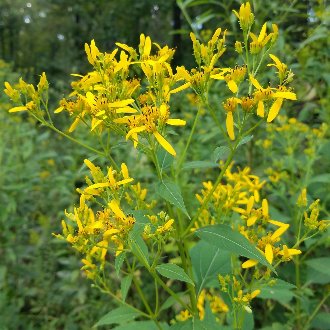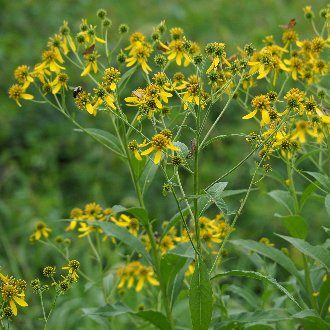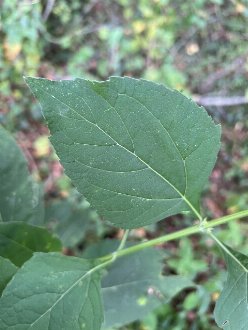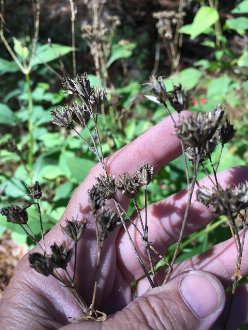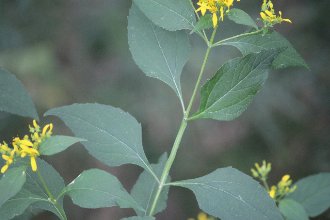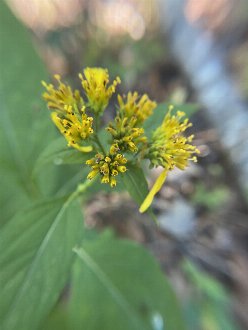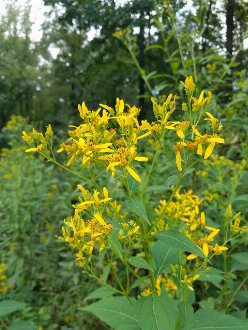Yellow Crownbeard (Verbesina occidentalis (L.) Walter)
↑Summary
A tall perennial native to the southeastern US.
↑Similar Plants
↑Habitat
Found in a variety of sunny to partly-sunny, disturbed habitats in the southeastern US. Natural habitats include open floodplains and forest clearings. Also found in anthropogenic habitats including pastureland, hayfields, along roadsides, power line clearances, and on waste ground. When growing in open conditions, this species is typically among the dominant vegetation, often co-dominant with Solidago (goldenrod) species, and, where ranges overlap, sometimes also with white crownbeard (Verbesina virginica).
Most frequently found on bottomlands but also found in upland forests, particularly where rocky soils create more open conditions. Prefers base-rich (calcium or magnesium) soils of moderate to high overall fertility. Prefers moist sites but can tolerate mesic to dry conditions, especially when partly shaded.
Sensitive to ground-level ozone, which can sometimes limit its growth in urban areas and along high-traffic roads, habitats where it would otherwise thrive.
Humans have greatly increased the habitat for this species overall, through clearing of land for agriculture, and increased disturbance on sites with the rich soils it prefers, but we have also theratened it in urban areas through air pollution, as well as directly controlling its numbers through herbicide, when it occurs in pastureland. This species benefits from infrequent mowing, which tends to create the open condition it prefers, while also spreading its seed.
↑Faunal Associations
The foliage is toxic to mammals and largely ignored by mammalian herbivores, including livestock.
We have found little research studying which insects are supported by this species in particular. The flowers attract a variety of pollinators, including various native bees, honeybees, and soldier beetles (Cantharidae).
The underside of the leaves are mined by the Cremastobombycia ignota moth, which also eats other plants of this genus as well as several other genera in the Asteraceae family.
↑Uses
This species is infrequently used by humans; it is more often considered a weed in pastureland and hayfields, where it is unwanted due to its toxicity to mammals.
It has high value to insects and birds, however, and is occasionally planted in naturalized plantings and meadow restorations. Its usage in landscaping is limited by its tall size and tendency to aggressively self-seed and outcompete other plants in a typical managed landscape.
It can be used as a companion plant in food gardens to attract soldier beetles, which help control the population of other insects, snails, and slugs. This benefit typically takes at least 2 years to take effect as eggs layed by adult beetles after the flowers bloom do not hatch until the following spring, and is the larvae that eat these other herbivores.
↑Links & External Resources
• Verbesina occidentalis (yellow crownbeard) | USDA PLANTS Database (About This Site)
• Verbesina occidentalis | Biota of North America Project (BONAP) (About This Site)
• Verbesina occidentalis Walter | Plants of the World Online (POWO) (About This Site)
• Verbesina occidentalis | NatureServe Explorer (About This Site)
• Verbesina occidentalis | Flora of North America (About This Site)
• Yellow Crownbeard | Maryland Biodiversity Project (About This Site)
• Verbesina occidentalis (L.) Walt. (Yellow Crownbeard) | Digital Atlas of the Virginia Flora (About This Site)



